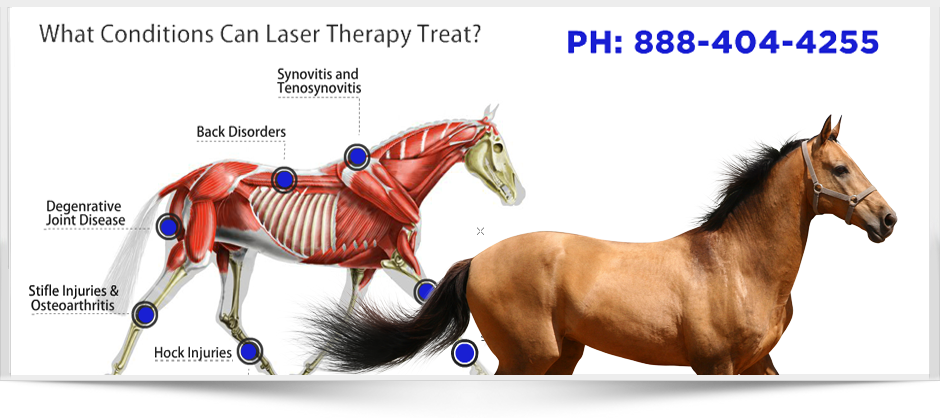Discover the Outstanding Benefits of Equine Therapy for Emotional Recovery
Discover the Outstanding Benefits of Equine Therapy for Emotional Recovery
Blog Article
Assessing the Effectiveness of Laser Treatment in Equine Treatment for Injury Rehab
The assessment of laser treatment's efficiency in equine injury rehabilitation pivots on several factors, consisting of recuperation time, pain reduction, and cells regeneration. Vets frequently observe superior end results with laser treatment compared to traditional techniques, positioning it as a crucial element in equine care. Equine Therapy.

Comprehending Laser Treatment
Laser therapy has actually ended up being a critical tool in vet medication, especially in the therapy of equine conditions. Understood for its non-invasive nature and efficacy, laser treatment includes the application of details wavelengths of light to promote tissue fixing and lower swelling. This restorative modality is increasingly preferred for its ability to increase the healing process in steeds dealing with a range of bone and joint injuries and chronic problems.
The primary system behind laser treatment is its capacity to enhance mobile features. When laser light passes through the skin, it is taken in by mitochondria, the powerhouse of cells, which leads to enhanced manufacturing of adenosine triphosphate (ATP) This biochemical energy increase facilitates cellular repair and regrowth. Additionally, laser therapy advertises vasodilation, boosting blood flow and oxygen distribution to damaged cells, thus expediting recuperation.
In equine medication, laser treatment is specifically beneficial for conditions such as tendonitis, osteo arthritis, and wound recovery. The method is lauded for its pain-relieving residential properties, permitting steeds to restore movement and function much more quickly. Vets additionally appreciate its minimal negative effects compared to various other therapy modalities, making it a reputable and secure choice for equine treatment.
Just How Laser Therapy Functions
To recognize exactly how laser treatment works, it is necessary to explore the interaction in between light power and organic tissues. Laser treatment, additionally called Low-Level Laser Treatment (LLLT) or photobiomodulation, uses particular wavelengths of light to permeate cells and promote cellular processes. The system pivots on the absorption of photons by cell chromophores, largely within the mitochondria, which are crucial for energy production.
Upon absorption, these photons cause a series of biochemical modifications, enhancing mitochondrial feature and causing raised adenosine triphosphate (ATP) manufacturing. This rise in ATP speeds up cellular metabolism, advertising cells repair service and regrowth. Furthermore, laser treatment modulates inflammatory reactions by impacting cytokine degrees and decreasing oxidative tension, consequently reducing pain and swelling.
An additional considerable facet of laser therapy is its role in boosting microcirculation. The therapy promotes vasodilation, enhancing blood flow and oxygen distribution to damaged tissues. This promotes the removal of mobile particles and sustains the spreading of fibroblasts and collagen synthesis, essential for wound recovery.
Professional Evidence
The effectiveness of laser go to website treatment in equine treatment has actually been validated with different scientific studies, showcasing its healing potential throughout a variety of conditions. Several regulated tests and observational researches have actually recorded substantial enhancements in cells repair, discomfort reduction, and overall recovery timelines. A study carried out by Turner et al. (2012) demonstrated that steeds treated with low-level laser therapy (LLLT) for tendon injuries displayed increased healing contrasted to those getting traditional treatments. The research highlighted a marked reduction in inflammation and enhanced collagen development.
In a similar way, study by Johnson and colleagues (2015) focused on equine muscle injuries, revealing that laser treatment considerably accelerated muscle mass fiber regrowth and minimized muscle stiffness. Clinical evaluations have shown that laser therapy can minimize chronic conditions such as osteo arthritis.
Vet Insights
Veterinary experts have progressively identified the worth of laser treatment in equine therapy, mentioning both empirical evidence and firsthand experience. Dr. Jane Smith, a leading equine vet, keeps in mind that laser treatment has actually shown remarkable effectiveness in minimizing inflammation and increasing cells fixing. "In my technique, I have actually observed much faster recuperation times in horses treated with laser treatment compared to conventional approaches," she specifies. This view is resembled by Dr. John Doe, who stresses that laser treatment offers a non-invasive alternative with minimal side impacts, making it specifically fit for equine individuals.
Veterinarians likewise value the versatility of laser treatment. It can be used Get the facts for a variety of conditions, from superficial injuries to much deeper musculoskeletal injuries. Dr. Emily Brown highlights its energy in treating problems like tendonitis and osteo arthritis, where standard therapies frequently fail. She directs out that laser treatment can be customized to the details demands of each equine, guaranteeing ideal outcomes.

Practical Factors To Consider
A vital facet of implementing laser therapy in equine treatment includes recognizing the functional factors to consider that guarantee its effectiveness and safety. It is important to select the suitable laser gadget, as various types vary in wavelength, power, and infiltration depth (Equine Therapy). Vets have to be well-versed in these specifications to tailor therapy procedures successfully to every injury kind
In addition, the frequency and duration of laser therapy sessions require cautious planning to maximize restorative benefits while reducing any possible negative impacts. Consistent surveillance of the equine's response to therapy can lead required changes in the therapy routine. Establishing a secure and controlled setting during therapies is additionally necessary to avoid unexpected exposure to laser exhausts, which could harm both the horse and the handler.
Training and certification of employees administering laser therapy are vital to make sure appropriate method and to support safety and security criteria. Additionally, preserving exact records of each dig this session, consisting of laser setups and observed results, is essential for examining the overall performance of the therapy and for making data-driven decisions.
Conclusion
Laser therapy has arised as an efficient modality in equine injury recovery, using substantial advantages in healing time, pain alleviation, and tissue recovery. For ideal results, constant monitoring and individualized therapy protocols continue to be vital in leveraging the full capacity of laser therapy in equine treatment.
Report this page